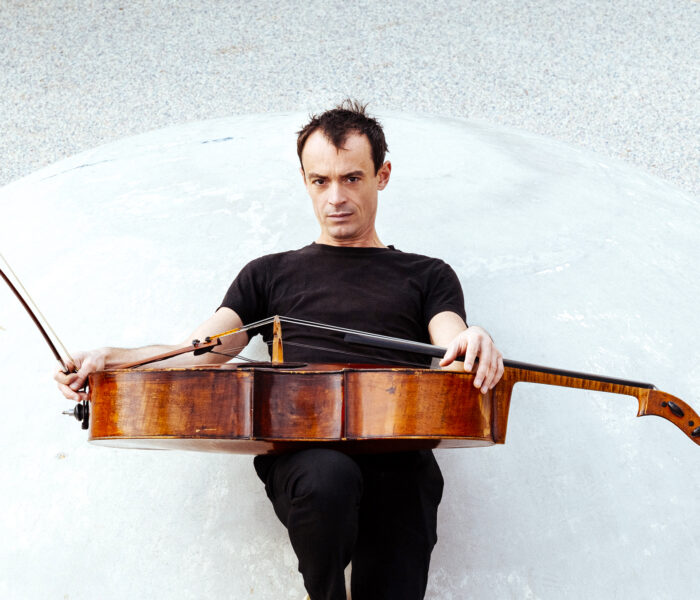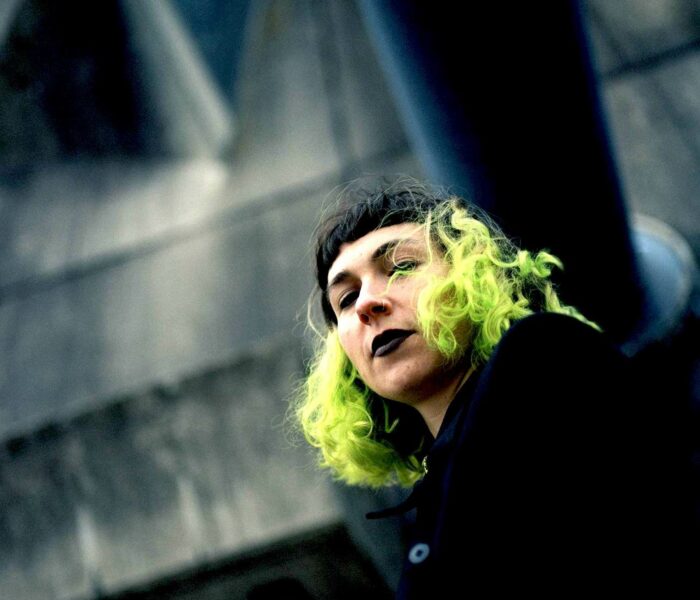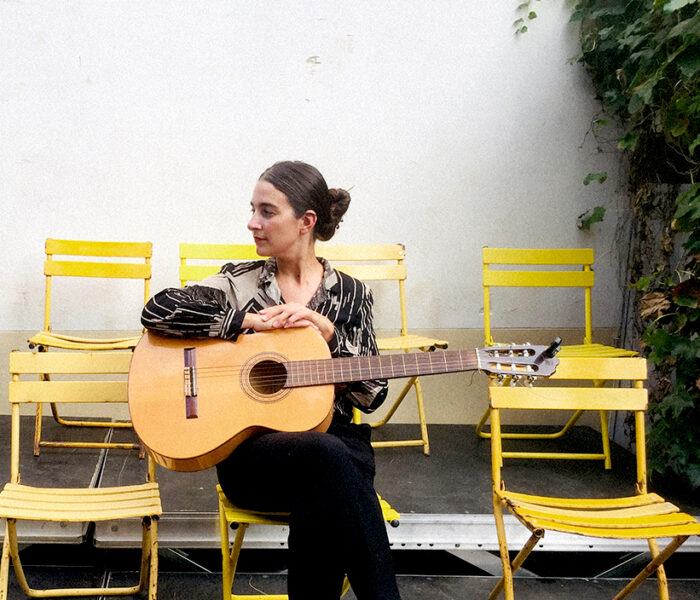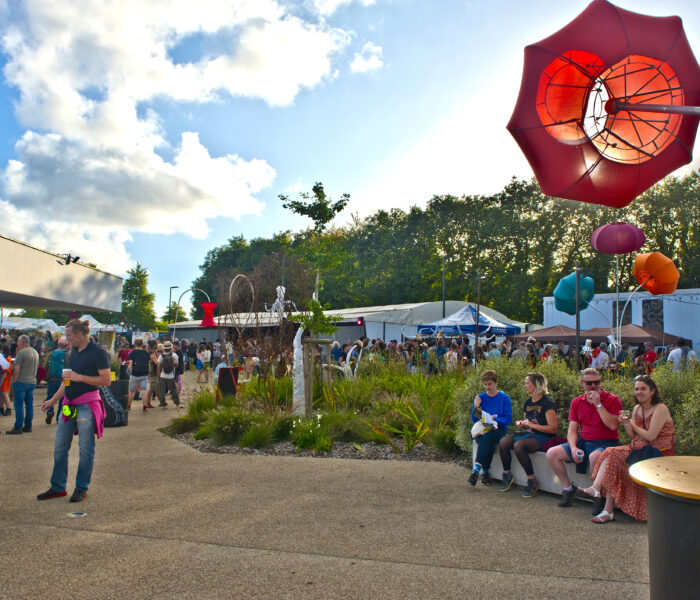Sarah Terral is Clément Vercelletto's double in a solo musical project based almost entirely on modular synthesizers. Le Morfil, her second album after Le Ménisque original (2021), is released on K7, vinyl and digital formats, and is based on short, haiku-like pieces. The musical mosaic is particularly rich and seductive.
This album is "90% based on modular synthesizers" (mainly Mannequin modules and a Serge 4U), says the artist, who seems to like talking in percentages. So, when he talks about his live persona, Sarah Terral, dressed in a black dress with rhinestones and adorned with a blue wolf with make-up on its face, or a moon of some kind, he describes "10% cross-dressing", a figure "easy to put together", a feminine self: Terral is in fact his mother's name, and Sarah is the name he would have received from her if he'd been born a girl. For him, the sight of "this slightly strange silhouette, this enigmatic figure" allows the listener to "change what they're listening to". To define his artistic personality, I would add that Clément Vercelletto is also a stage director, that he was a free party DJ in the early 2000s and that he frequents noise music circles.
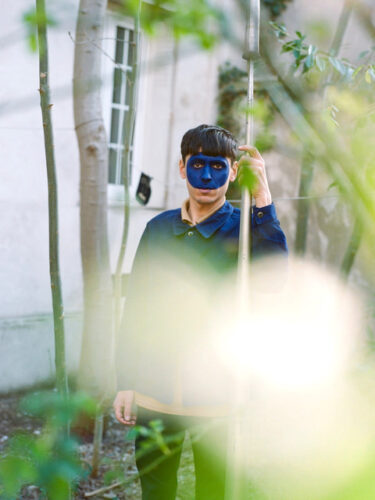
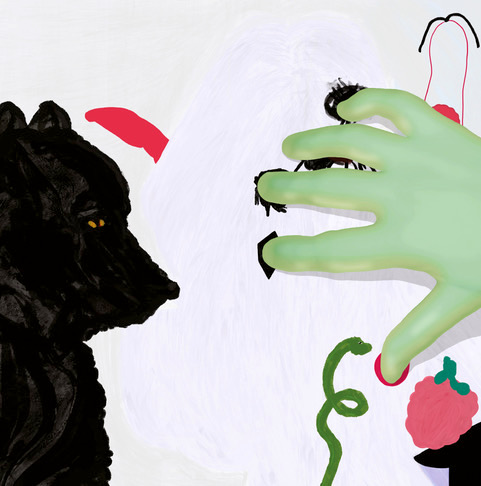
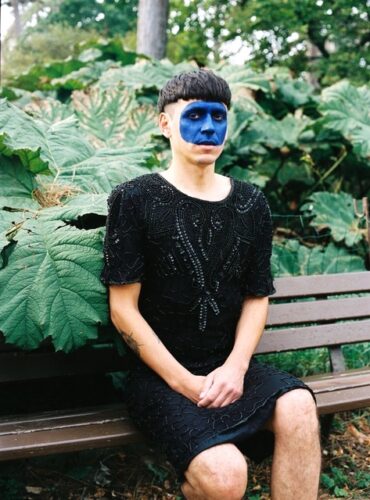
For my part, I only discovered Sarah Terral's project by listening to the album. Clément Verceletto wanted it to be radical, "both soft and hard". And it succeeds. Each chiseled track adopts a well-drawn character and transports us into a sound universe with a strong identity, starting with the strange crackling and whistling of siren-like drones on "Lesser adjutent" (the English name for an Asian wader, the hairy marabout), followed by the metallic tones of "Juste amies" ("Just friends" is the name of one of the Mannequins synthesizer modules used by Sarah Terral). These are obtained by diffusing sound via a transducer positioned on a gong. At once dynamic, rhythmic and danceable, these sounds also massage the skull with their long, hypnotic hold. I'm experimenting with a phenomenon that's always seemed mysterious and fascinating to me: when, beyond the barrier of metallic shrillness, industrial sounds end up sounding soft behind the mirror, providing intensely pleasurable auditory sensations.
Another evocation of a bird, "Le Bruant zizi" plunges into the lows of a powerful analog bass, continually disturbed by increasingly pronounced parasites, while "Une chanson douce" perches in rocking layers, floating delicately in the treble. "La cui roproduzione" maintains this feeling of gentleness, despite its rapid frequency shifts from treble to bass and its constant breaks.
It was during an impassioned discussion with luthier Léo Maurel, also a knife enthusiast, that Clément Vercelletto learned the meaning of the word "Le morfil", the sixth track on the record, which also gives the album its name: the microscopic metallic burrs that remain attached to the edge of a blade being sharpened. Truth be told, knowing this, this track makes us think of constant friction, as if magnified or distorted by amplification, a sonic and metaphorical exploration of this slag. The aural sensation is soft and warm, almost rocking. "Ortofrutta", a word gleaned from a crate, becomes almost melodic through its mineral sounds, like singing shocks on stalactites, while the arpeggios of "La psychanalyse d'une tente trois secondes" (lasting 2'10) recall the heyday of German synthetic krautrock, or even the beginnings of techno trance.
Dark, grainy, rumbling and growling, "Les trois brigands" propels us into crushed, crushing bass, while a strange flute song gradually rises in the distance, as if blown by the wind: these are organ pipes, Clément Vercelletto tells us. The effect of this beautiful superposition of two contrasting sound worlds is striking. It's also the longest track on the album. Psychopompe", the god charged with leading the souls of the dead to safe harbor, continues with a very strange chant. It's a fast-paced, acidic journey, full of strange loops that wouldn't be out of place in the heart of a live tekno mental unfolding in the mud of a free party. All that's missing is a rallying kick for an ecstatic dance-floor to ignite!
Then "Le grand couturier" gently brings the tension down with its repetitive harmonies, counterpointed by cyclical crackling. During our discussions, Clément Vercelletto dared to use the word "emo"(1) to describe certain passages on the album. Initially astonished by the daring choice of term for such an uncompromising record, and at the same time admiring the ever-shifting, even slightly alienated, reading grids employed by those involved in noise, I can't help but agree at the end of this beautiful listening experience, as I let myself be lulled by these last sounds imbued with a gentle melancholy. What a journey!
Guillaume Kosmicki
Le Morfilperformed, recorded and mixed by Clément Vercelletto, 2023(Three:Four Records / La république des granges)
(1)The emo musical style, from "emotional", first affected punk rock and hardcore rock in the second half of the '80s. Songs became more melodic, with more soaring sounds and the intention of making them more emotional, more sentimental. Emo often evokes the themes of melancholy and depression, with all their attendant afflictions. The style enjoyed a strong resurgence in the 2000s and 2010s, particularly in the world of hip-hop, with emo rap.
Photos © Laura Sifi
Photos © Lucas Grisinelli



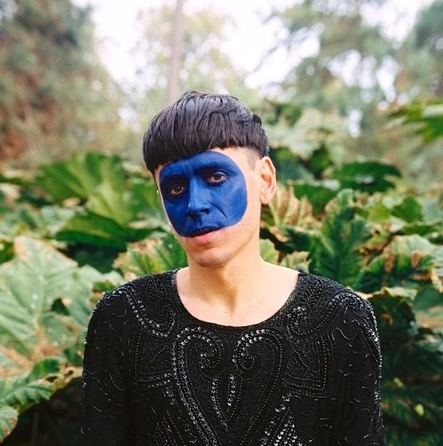)
